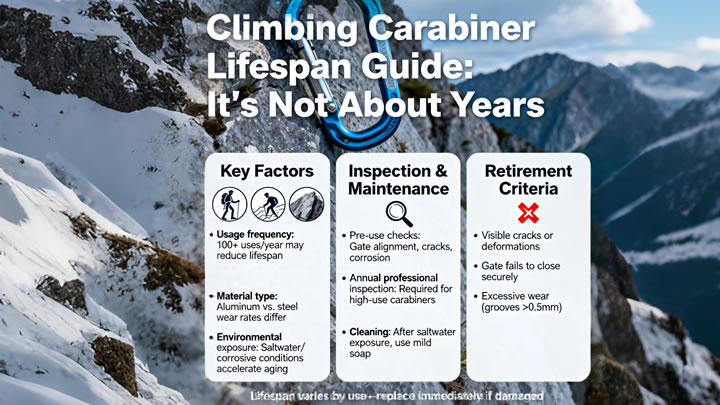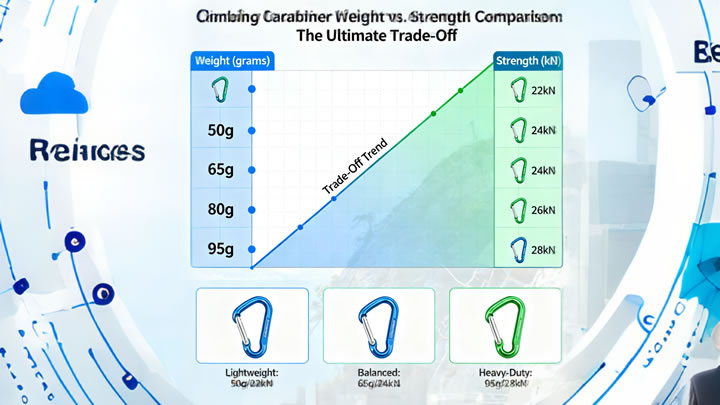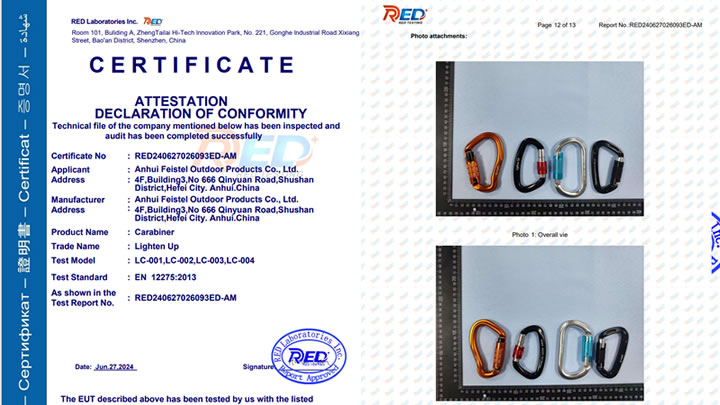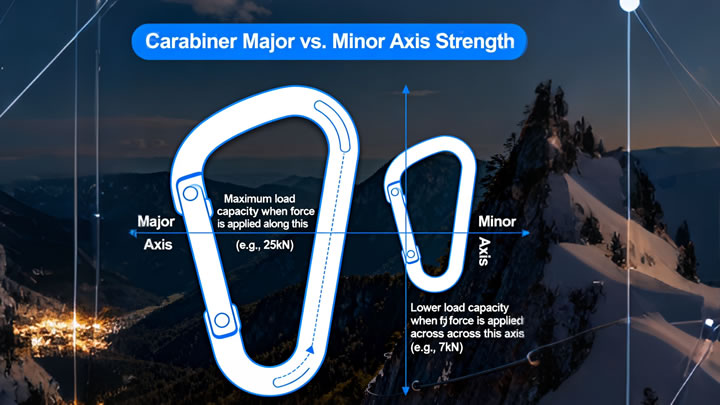What is the difference between major axis and minor axis strength of a carabiner?
If you engage in climbing, rope access, rigging, or any activity where life depends on a simple metal snap-link, you've likely heard the terms "major axis strength" and "minor axis strength." But what do these ratings truly mean, and why is understanding the difference not just technical jargon—but a fundamental pillar of safety? This article dives deep into the engineering and practical implications of carabiner strength, explaining why a carabiner rated for 24 kN can become dangerously weak under different loading conditions.
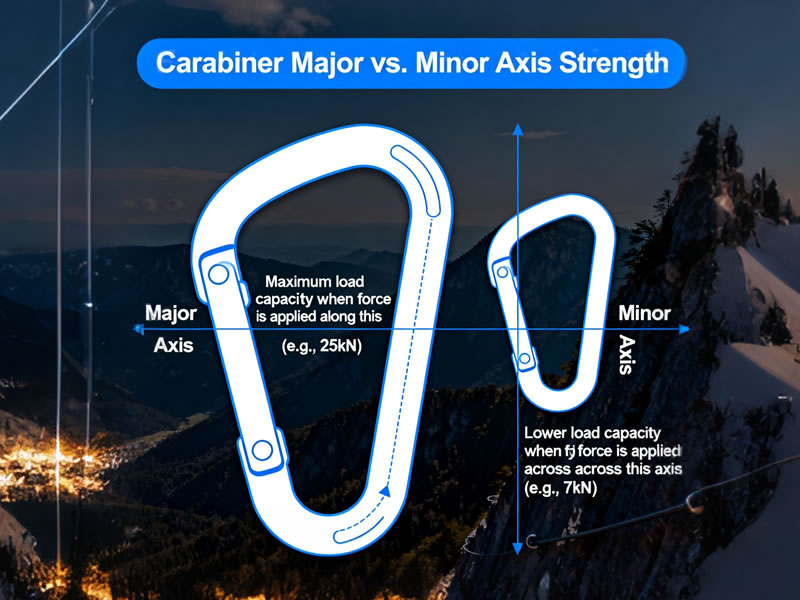
The Basics: Defining the Axes
First, let's visualize a carabiner. It has a characteristic oval or D-shape.
- Major Axis Strength: This is the strength of the carabiner when load is applied along its longest dimension—from the spine (the solid, curved back) to the gate's opposite side. This is the intended and strongest loading direction for virtually all applications.
- Minor Axis Strength: This is the strength of the carabiner when load is applied along its shortest dimension—across its width, effectively pinching the spine and the gate together.
Major Axis Strength: The Benchmark of Performance
The major axis strength is the headline number you see on a carabiner's packaging—often 20 kN, 24 kN, or even higher. This rating represents the force required to cause the carabiner to fail (bend or break) when pulled in a straight line along its spine.
Why is it so strong?
In this orientation, the carabiner's spine, which is the thickest and most robust part, bears the load directly. The force is distributed evenly across the strong, continuous curve of the metal. For context, 1 kiloNewton (kN) is approximately 225 pounds of force. A 24 kN rating means the carabiner can theoretically hold over 5,400 pounds in this ideal configuration. In climbing, this is the direction of loading when you clip a rope into a quickdraw or attach yourself to an anchor.
Minor Axis Strength: The Critical Weak Point
The minor axis strength is, in many ways, a more important safety rating. It is significantly lower than the major axis strength—typically only 1/3 or even 1/4 of the major axis rating. For a 24 kN carabiner, the minor axis strength might be just 7-8 kN.
Why is it so much weaker?
When loaded on the minor axis, the carabiner is subjected to a cross-loading scenario. The force acts to pry the gate and spine apart, creating immense leverage on the weakest part of the carabiner: the gate mechanism. The nose of the carabiner, where the gate closes, is not designed to handle this kind of stress. This can cause the gate to break, the carabiner to bend open, or the nose to snap.
Why This Difference Matters in the Real World
Understanding this distinction is not an academic exercise; it's a matter of life and death. Here are common, real-world scenarios where cross-loading occurs:
- Improperly Clipped Quickdraws: If a quickdraw is twisted or the rope drags it sideways against the rock, the carabiner gate can be pressed against the rock face, forcing the carabiner into a cross-loaded position.
- Anchor Building: Connecting multiple carabiners or slings in a complex anchor can easily create a situation where a carabiner is loaded on its minor axis if not rigged carefully.
- Hanging a Load: In industrial settings, incorrectly connecting a load can easily side-load a carabiner, drastically reducing its safe working load.
- Gate Drag in Aid Climbing: A common cause of carabiner failure in aid climbing is when a carabiner's gate is dragged across a piece of gear, applying a sideways force.
A fall or shock load in any of these cross-loaded situations could lead to catastrophic failure at a force far below what the user might expect based on the major axis rating.
A Third Factor: The Open Gate Strength
It's also crucial to mention a third, even weaker, strength rating: open gate strength. This is the strength of the carabiner when a load is applied along the major axis while the gate is open. This rating is typically only 1/3 of the major axis strength (e.g., 7-9 kN for a 24 kN carabiner). This simulates a scenario where the gate is accidentally resting against a rock or structure and is prevented from closing. It highlights the critical role a closed and locked gate plays in the carabiner's overall strength.
Conclusion: Knowledge is Your Best Safety Gear
The difference between major axis and minor axis strength is a fundamental principle of carabiner safety. The high major axis rating gives you a margin of safety for the forces encountered in a fall, while the much lower minor axis rating serves as a critical warning to avoid cross-loading at all costs.
Always inspect your setup to ensure carabiners

